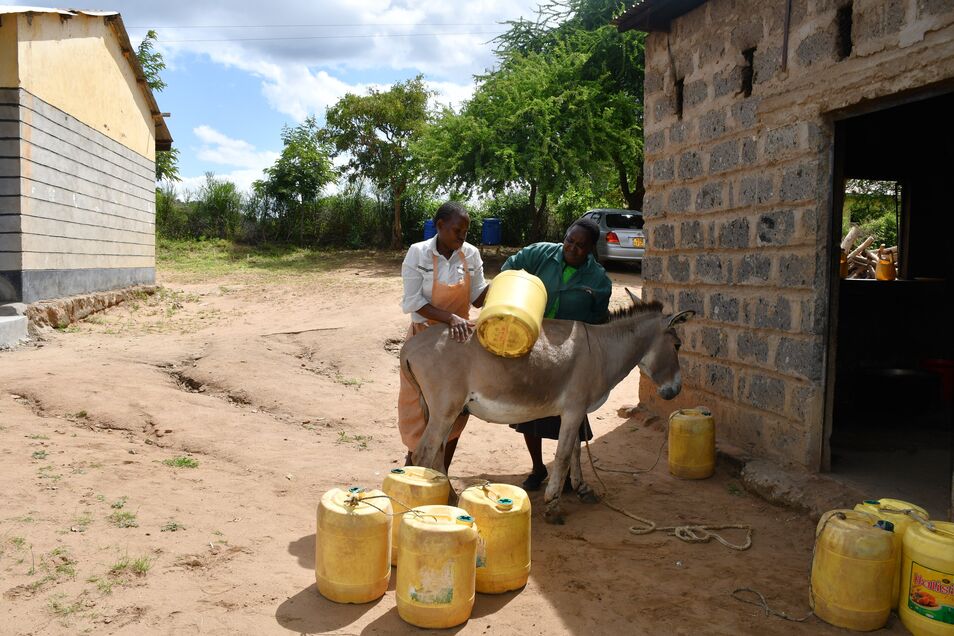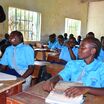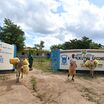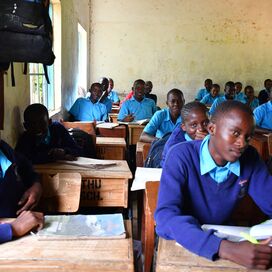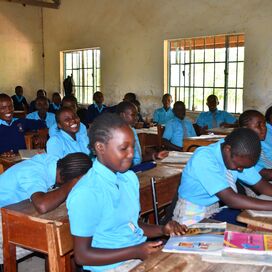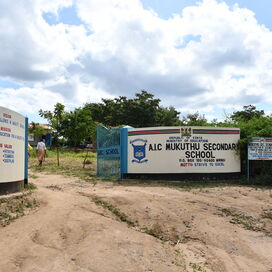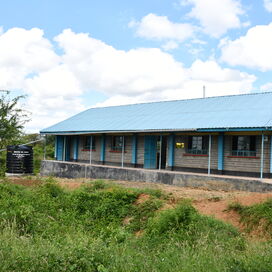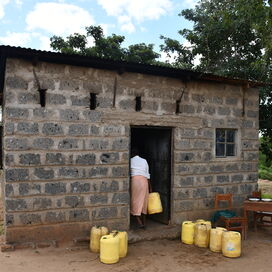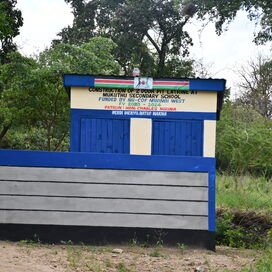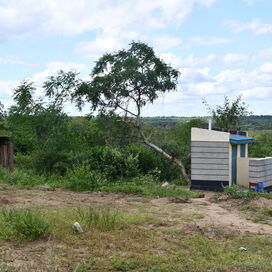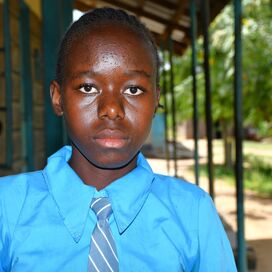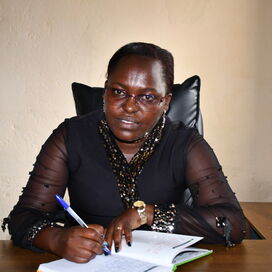Project
Mukuthu Secondary School
Mukuthu Secondary School was founded in 2013 through a community initiative. The parents acquired the school land, while the buildings and other infrastructure were acquired using government funds and support from the parents. The school has grown in terms of population and academic performance over the years. There are currently 110 students, 61 girls and 59 boys, and 14 administrators/staff.
The school has a few plastic water rainwater tanks, but they cannot harvest enough water during the short rainy periods to sustain the school throughout the entire drought period. The only alternative is for the school to send students to collect water or pay vendors to deliver it from scoop holes in the local river, but both are risky and costly endeavors.
Field Officer Alex Koech described some of the issues associated with paying vendors to collect water.
"The water vendor ferries the jerrycans of water using a donkey, but draws water mostly from scoop holes in the distant seasonal river. These scoop holes are open to wind, animal, and human contamination. The water from the scoop holes is saline with a brownish appearance and unpleasant taste," said Alex.
"The water vendor ferries the jerrycans of water using a donkey, but draws water mostly from scoop holes in the distant seasonal river. These scoop holes are open to wind, animal, and human contamination. The water from the scoop holes is saline with a brownish appearance and unpleasant taste," said Alex.
"Water purchases are costly, which further strains the school's meagre resources. The water from the scoop holes is also contaminated and exposes learners to water-related infections such as typhoid, amoeba, and dysentery, which ultimately culminate in absenteeism as the affected students seek treatment or medication. Inadequate water within the school has adversely affected hygiene and sanitation, preparation of meals, and implementation of agriculture projects for learning," he continued.
But students also bear the burden of collecting water. Sixteen-year-old Regina finds it a tiresome task.
"Fetching water takes [a] long [time] because we have to walk a long distance to [the] Tyaa River. When we get there, there are usually many people already waiting, so we have to queue for a long time. Sometimes, the scoop holes have little water, and we have to wait for them to refill before we can fetch."
"Sometimes people at the water point can be unkind, especially when the queues are long. Some people try to skip the line or push others, which can make the experience stressful and unfair. I’ve been pushed to the back of the queue before. Sometimes older people or stronger students try to get ahead, and we, [the] younger ones, are forced to wait even longer. It feels bad, especially when you’re already tired or in a hurry," lamented Regina.
"When I have to fetch water before or after school, I get very tired and don’t have enough time to revise. On some days, I even arrive late or miss part of the lesson. This makes it harder to keep up with my studies and prepare well for exams, especially in subjects like agriculture that need more time and focus," she continued.
"Sometimes I feel frustrated and overwhelmed, especially when I know I have homework to do or a test to prepare for. It’s also hard when the sun is hot and the queue is long. But I still go because we need the water," Regina exclaimed.
The negative physical impacts are not the only issue. The financial strain not only impacts the school but also parents who are required to pay for medical treatments and ever-increasing school fees that inflate to cover the cost of water delivery, pushing them further into poverty.
Steps Toward a Solution
Schools without reliable, on-premises water access often rely on students to fetch and carry water, leading to rationing and uncertainty about water quality. The water is typically poured into a communal storage tank and used by the entire school. With children carrying water from all different sources, it is also impossible for teachers and staff to know exactly where the water comes from and how safe it is to drink.
A new water point will be located on-premises at the school to ensure accessibility, reliability, and safety for students, teachers, and staff while meeting our school coverage goals. Having water available at the school allows children to drink, wash hands, and use sanitation facilities without leaving school grounds, preventing disruptions to lessons and reducing safety risks. A dedicated source increases water availability, reduces reliance on stored water, minimizes rationing, and ensures confidence in the safety of the water. This means staff and students are healthier, and their lessons aren’t disrupted, contributing to a better education!
Our technical experts worked with the school leadership and the local community to identify the most effective solution to their water crisis. Together, they decided to construct a rainwater harvesting system.
Rainwater Harvesting System
A rainwater collection system consists of gutters that channel rainwater effectively into large holding tanks. Attached to buildings with clean, suitable roofing, these systems are sized according to the population and rainfall patterns. Water can be stored for months, allowing for easy treatment and access. Learn more
Handwashing Stations
Alongside each water source, we install two gravity-fed handwashing stations, enabling everyone at the school to wash their hands. Handwashing is crucial for preventing water-related illnesses within the school and community. Student “health clubs” maintain the stations, fill them with water, and supply them with soap, which we often teach them how to make.
School Education & Ownership
Hygiene and sanitation training are integral to our water projects. Training is tailored to each school's specific needs and includes key topics such as proper water handling, improved hygiene practices, disease transmission prevention, and care of the new water point.
To ensure a lasting impact, we support the formation of a student health club composed of elected student representatives and a teacher. These clubs promote hygiene practices schoolwide and keep handwashing stations well-stocked. This student-led model encourages a sense of ownership and responsibility.
_____
Safe water and improved hygiene habits foster a healthier future for the entire school.
To ensure a lasting impact, we support the formation of a student health club composed of elected student representatives and a teacher. These clubs promote hygiene practices schoolwide and keep handwashing stations well-stocked. This student-led model encourages a sense of ownership and responsibility.
_____
Safe water and improved hygiene habits foster a healthier future for the entire school.
-0.893705 latitude, 38.018247 longitude
H2O for Life is not a WASH (water, sanitation and hygiene) project implementer. We have partnerships with non-governmental organizations (NGOs) implementing WASH in Schools projects around the world. Our NGO partners match funds needed for each school project. We also have a generous donor that provides us with an interest-free loan that, along with matching funds, allows for many projects to be started or possibly even completed before total funds have been raised. In rare situations we reserve the right to reallocate funds to alternate project(s).
Questions? Ask us at 651-756-7577 or info@h2oforlifeschools.org.
